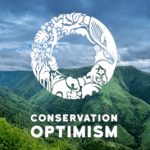Wondering what went right this week in the conservation world? We’ve got you covered with our Conservation Optimism Round-Up! Each week we are collating stories of optimism from around the globe so that you never miss your dose of Monday Motivation.
1. Rescued endangered Loa water frogs produced 200 offspring in a Chilean zoo
“Conservationists in Chile are celebrating after a group of critically endangered Loa water frogs produced 200 offspring in Santiago zoo.”
Conservationists in Chile are celebrating after a group of critically endangered Loa water frogs produced 200 offspring in Santiago zoo!#conservationoptimism #waterfrogshttps://t.co/gbKrvqzO3n
— SCB (@Society4ConBio) October 25, 2020
2. Back from the Brink project improved our understanding of the shrill carder bee in the UK
“This Back from the Brink project, led by the Bumblebee Conservation Trust and Buglife, ran from 2017 – 2020 and focused on two of the last strongholds of the bee, in Somerset and the Thames Gateway.”
3. Native wildlife is returning to Palmyra Atoll following the eradication of invasive rats and coconut palms
“Looking back on Palmyra’s recent history, Wegmann sees it as a source of hope. Tropical islands may seem fragile, but they can turn out to be surprisingly robust.”
4. Legal victory in the Tongass National Forest in Alaska goes unchallenged by Department of Justice
“The U.S. Department of Justice has decided against appealing the decision by a federal court in June which vacated the U.S. Forest Service’s plan to log a 1.8 million-acre project area on Prince of Wales Island in Southeast Alaska.”
#conservationoptimism https://t.co/pzpl4AzLI6
— Julian Hughes 🌍 (@Penrhynbirder) October 22, 2020
5. Iberian cat claws its way back from brink of extinction
“A 20-year project to reintroduce the species across the peninsula has seen their numbers rise to 855.”
The Lynx Effect: Iberian cat claws its way back from brink of extinction:
— Natural Capital Coalition (@NatCapCoalition) October 26, 2020
The population has increased ninefold to 855 in 18 years. If the current conservation & reintroduction efforts can maintain momentum, the species could be out of danger by 2040.https://t.co/hsV0UaVcJn pic.twitter.com/6oYGlbEbBb
6. Recent study shows that most of the frog species living where the Australian fires were have been accounted for
“Much of the data came from non-scientists, who kindly spent some of their time in lockdown checking in on their amphibian neighbors.”
some #conservationoptimism news from Australia 🐸@FrogIDAus @ConservOptimism /gk https://t.co/DapkUZaZfU
— Alliance for Freshwater Life (@AFL_org) October 21, 2020
7. Two new species of long-legged aquatic mouse have been discovered in Africa!
“After almost a century, scientists have discovered two new species of the mouse, which are closely related to a lost species recorded only once, 93 years ago.”
Have a story to share for our weekly round-up? Use #ConservationOptimism on Twitter, Facebook, LinkedIn and Instagram!


